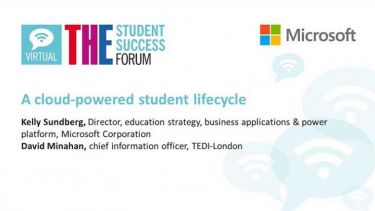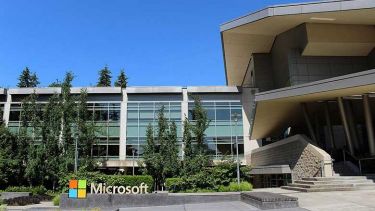
Microsoft’s Hololens project is pioneering new forms of collaboration in higher education and industry
Defining virtual reality can be difficult. It has a specific meaning within immersive technology, but it is also the broad term for a family of disrupting technologies – including mixed reality – that are creating radical opportunities within education and training.
Believed to offer the best facets of virtual reality (fully artificial reality) and augmented reality (artificial overlays on reality), mixed reality enables physical and digital objects to co-exist and interact in real time. Microsoft is developing the potential for this instinctive interactivity with its Hololens headset, a self-contained, holographic computer.
Despite couching himself as “a digital pragmatist, rather than a digital evangelist,” Ian Fordham, chief learning and skills officer for Microsoft UK, says that Microsoft is “excited” by the Hololens journey.
It is one that involves almost 60 universities. One partnership, with the University of Cambridge and the civil engineering and construction firm Trimble, aims to optimise the automated progress monitoring of remote structures. Hololens has also been used by a team of surgeons from Imperial College London to examine patients before they operate on them.
Hololens is remodelling teaching methods, too. Pearson has released a mixed reality curriculum of six apps using Hololens, including the anatomy app HoloHuman and Holopatient, which simulates illnesses and guides students through how to treat them. Other apps include HoloHistory, HoloMath and HoloChemistry, which contains a 3D molecule builder and can be calibrated for a range of education levels – from primary to HE.
The adoption of mixed reality learning paradigms is “inevitable”, according to Leila Martine, Hololens director at Microsoft UK. “It’s a more human way for us to learn and interact than having a qwerty keyboard or reading from a textbook. Learning retention levels are off the charts,” she says.
University of Hull computer science graduate and chief executive officer of spatial computing company VISR, Louis Deane has seen this at first hand. Chosen in January 2018 out of 2,000 applications to become one of 14 Microsoft Hololens partners, VISR is a tenant of the University of Hull Enterprise Centre. Co-founded with Lindsay West of packaging manufacturer Garthwest, it has grown by partnering with the university on a mixed reality accelerator graduate hire scheme that teaches students to acquire skills through solving problems.
“Students are working with real companies with real problems,” says Deane. “On the business side, companies understand how specialised graduates can be built from the training programme – meanwhile the university, already a pioneer in VR, has been pinned to the map as the MR university.”
This win-win scenario has been applied across a number of projects by a diverse range of companies, such as Audi, AB InBev, Centrica and LearningMate. The latter has created a training tool for electricians to maintain fuse boxes. This was on offer for delegates to engage with at Microsoft Future Decoded 2018. The showcase demonstrated its intuitive interface and how it differs from a more isolated virtual reality session.
It is this “connected experience” that Deane thinks makes for “a nice marriage between machine and person”.
VISR is developing a craniotomy app that Deane believes will improve upon “looking at a plastic brain on a table”.
“It’s much more effective if you can pull a holographic brain apart, learning collaboratively, and choose from thousands of examples. Hololens makes something fairly mundane more effective,” he says.
Deane tempers talk of making teachers a redundant part of the equation, however. “You’re training the person and the machine. Mixed reality will ripple into other forms of education, but it will be a long time before there is nobody else in the room. A computer can’t invent a course model or design a curriculum.”
In terms of how long we might wait for a rollout of Hololens across institutions, Ian Fordham predicts a “flagship to mainstream” timetable of 5-10 years. Although he warns against “inflated expectations” and adds: “one of the futures I see is that you put this sort of technology in the hands of the students and it becomes ubiquitous.”
Find out more about Microsoft in Education.









